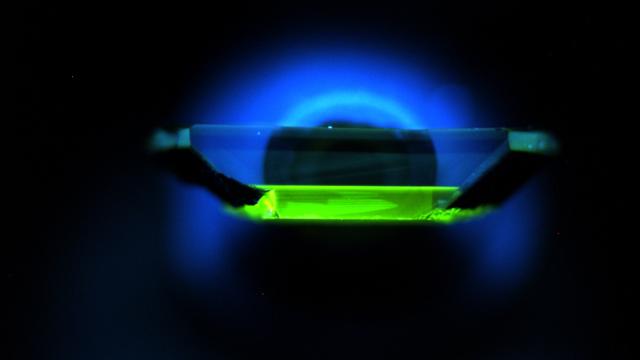“Diamonds are forever” is a cliche that fails to fully encapsulate the many strange properties of diamonds. But a new kind of diamond, one loaded with impurities, relies on a sort of foreverness that could be useful in future quantum technology — maybe even a quantum internet.
That probably sounds meaningless, so let’s back up. Diamonds are just lattices in which every carbon atom bonds to four neighbouring carbon atoms, making a strong network. Scientists have found interesting uses for diamonds by swapping some of the carbon atoms for nitrogen — such as making a time crystal, for example.
A new experiment instead swapped some of the carbons for silicon atoms, creating silicon-vacancy diamonds that could make for potentially useful quantum systems.
“We show that through careful materials engineering, we are able to uncover highly coherent optical and spin properties of SiV0,” the authors, led by Nathalie de Leon, assistant professor at Princeton, wrote in the study published in Science.
Basically, these diamonds have properties that make them useful for linking quantum computers together.
When I say “quantum”, I basically mean “obeys the strange rules of quantum mechanics”. Let’s first think about the property called spin. Electrons can have a spin of either up or down, the way a checker piece can be either red or black. If I handed you a checker while your eyes were closed, you wouldn’t know its colour — but theoretically, if you knew every detail about the bag the checker came from and how my hand reached into the bag, you could figure out what colour the checker was.
But with electron spins, it doesn’t work that way. If it’s quantum, you can know literally everything there is to know about a system and still not know whether the electron has a spin of up or down. That’s the coherent state, and it’s often interpreted as meaning that the electron’s spin is both up and down at the same time. This coherence is easy to explain mathematically, but pretty hard to construct physically, since teeny disturbances from the outside world can cause particles to pick and settle in a spin.
The diamonds with nitrogen atoms swapped for carbon atoms have a leftover electron and a gap in the lattice structure. This hole can take on innate properties, with which it can form a coherent quantum state. It can even entangle with other holes — this is kind of like coherence, but instead of being unable to conclusively describe a single particle, multiple particles get swept up into the same maths, and can’t be described without each other.
Ultimately, scientists want to build computing devices where data can be coded onto single spins, sets of coherent spins, and sets of entangled spins. In such a paradigm, you’d want to have the quantum computers communicate with one another — creating something akin to a quantum internet. Perhaps you can translate the quantum state information to a moving thing, such as a light particle, called a photon.
But those nitrogen-vacancy diamonds suffer from a drawback when you try to translate the spin data into information on a photon — when they emit photons, they’re not all the same frequency or colour. They’re unpredictable. Scientists could perhaps overcome this drawback with a silicon-vacancy diamond.
“A good spin-photon interface should always emit photons of the same, well-defined frequency, with a very low uncertainty. Unfortunately, 97 per cent of photons emitted by the [nitrogen vacancy] are accompanied by diamond lattice vibrations which shift the frequency of the photon from the desired frequency, rendering them useless for quantum networking tasks,” Mihir Bhaskar, a graduate student not involved in the study, told Gizmodo.
But, while others have created silicon-vacancy diamonds before, this paper takes it a step further. “In this work, the authors show that the [silicon-vacancy diamond] emits photons of a well-defined and stable frequency, making it a promising spin-photon interface.” The authors prove this by producing their diamond and performing a series of tests and measurements with light.
This isn’t a huge leap closer to a quantum internet, of course. Another study, which hasn’t yet been peer-reviewed, pointed out that the diamond doesn’t emit the translated light very brightly unless it’s under a lot of pressure, perhaps 10,000 times the pressure of air on the Earth’s surface.
Said Bhaskar: “The required strain engineering of the diamond presents a large challenge for incorporating SiV0 into future technologies.”
In these early days of quantum computers, it’s hard to tell what technologies will stick. But the ones that do will probably be pretty weird, and might take advantage of highly engineered, strange quantum systems, such as silicon-filled diamonds.
[Science]
